Edgar Degas including The Dance Class
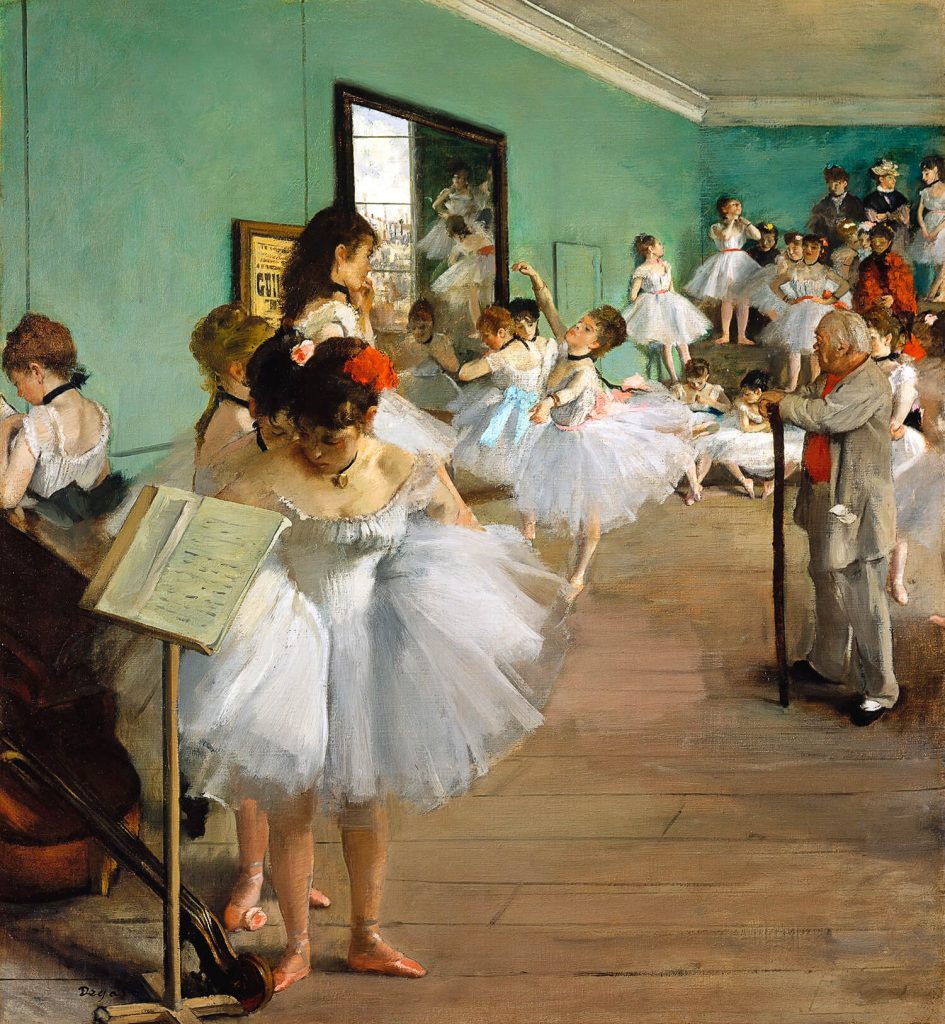
The Life and Works of Edgar Degas
The art world would be a lot different today if it wasn’t for Edgar Degas. This is a short biography highlighting some of his most famous pieces including The Dance Class (one of my favorite artworks), and the impact he had on the art world.
Hilaire-Germain-Edgar Degas, was a French artist born in Paris, France on July 19th, 1834. He is one of the most famous French painters and sculptors from the 17th Century.
Degas is widely acclaimed to be one of the founders of Impressionism.
He grew up to be a wealthy artist who loved to paint scenes of everyday life.
Degas’ paintings can be characterized by their sense of movement and spontaneity. His work is a bridge between the past and the future. He used classical techniques but also experimented with new technologies.
His parents were Louis-Valentin Degas, a banker, and Marie-Célestine Musson. Both were part of the French high bourgeoisie. His early life was marred by the tragic passing of his mother. This occurred just a few days after giving birth to him.
At the age of 19, further tragedy struck the family. His sister died from a horse-riding accident.
His Education
Degas received a classical education at the prestigious and rigorous institution, the Lycée Louis-le-Grand. In his early years, due to the influence of his father, a connoisseur of art, he became an excellent draftsman and painter.
By the time he was 18 years old, he began studying the works of great masters such as Raphael at the Louvre in Paris. He also studied contemporary painters such as Ingres and Delacroix.
In his early 20s, he entered the École des Beaux-Arts in Paris. He soon departed from the school, traveling to Italy where he studied the great works of Italian Renaissance painters such as Michelangelo and Leonardo da Vinci.
His Early Career
Degas returned to Paris in 1859 and quickly established himself as a historical portrait artist.
In 1866, he began to develop a rival relationship with Edouard Manet, whom he had previously admired. Both artists believed that painters should use more modern methods and themes.
During the late 1860s, a group of painters known as the Impressionists congregated at Café Guerbois. The group included Degas, Manet, Renoir, Duranty, Bazille, Monet, Cezanne, Sisley, and Pissaro.
Their discussions would often become quite heated. It was here their understanding of modern art became more profound.
In 1870, the Franco-Prussian War broke out. Degas volunteered for the French National Guard.
Degas is well-known for his use of ballerinas in his work. They would-be chosen as models and paintings created based on the dancers’ movements. His paintings would focus on movement, light, and shadows.
Further fine examples of the acclaimed work of Degas:
“The Dance Lesson” (1879) Present Location – National Gallery of Art, Washington D.C.
“Dancers, Pink and Green” (1890) Present Location at the National Gallery of Art, Washington D.C.
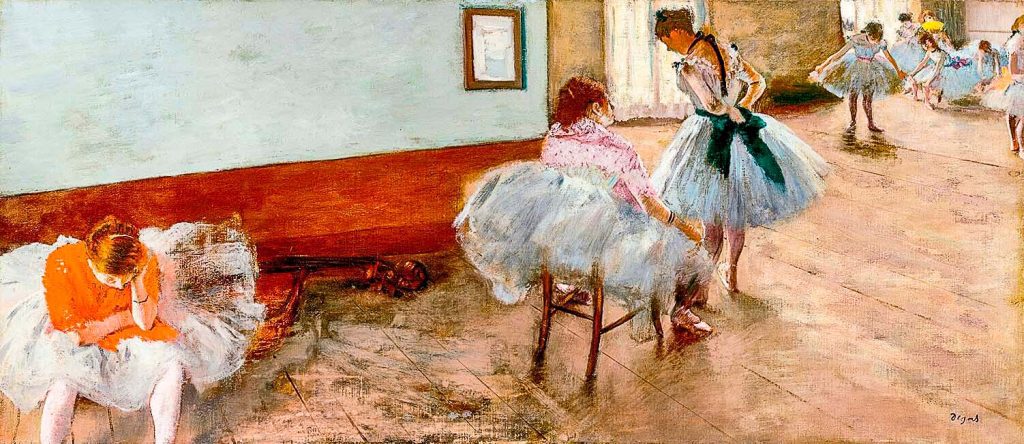
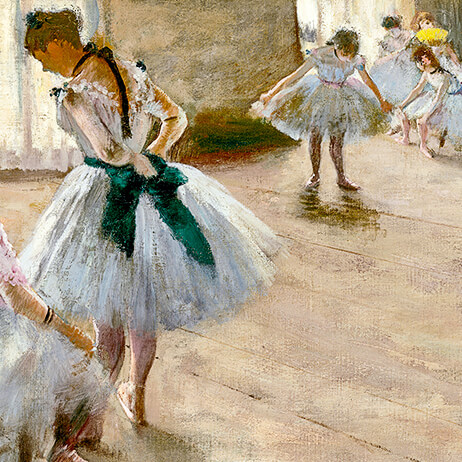
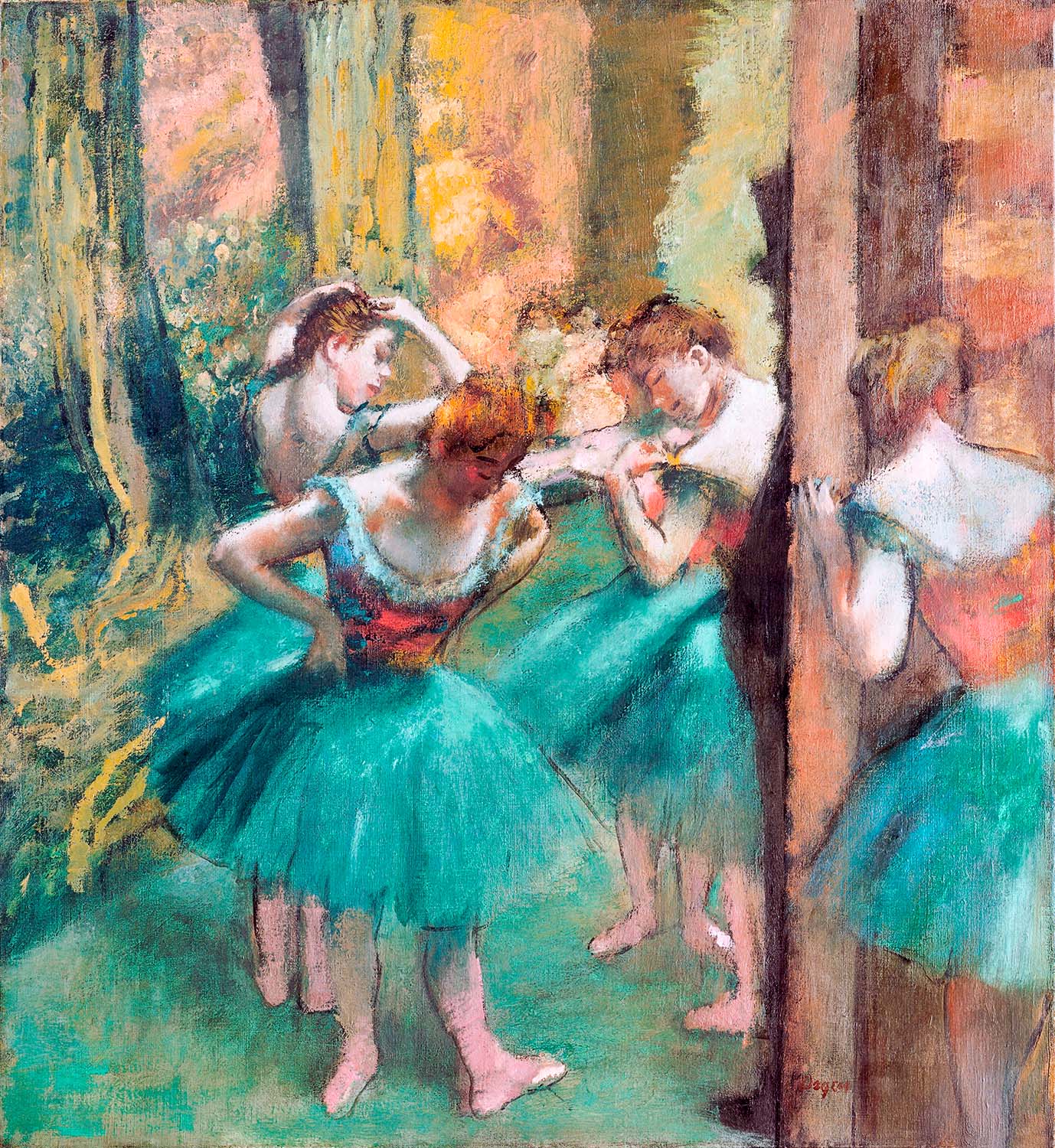
As I mentioned earlier, Degas was an Impressionist, (a label he firmly rejected) although he preferred to call himself a Realist or Independent. This means that he painted in a very naturalistic way, which is to say that he tried to capture the reality of nature.
He’s known for his interest in movement and capturing the human form in motion in his works. He painted very carefully with a deep-seated knowledge of how to create balance in composition through value, color, and line.
LIFETIME ACCOMPLISHMENTS
Degas completed his most famous painting called Dancer with Bouquets (c. 1877-1880). It was a huge departure from the traditional techniques. He used it as an opportunity to integrate multiple perspectives and unfinished surfaces into the painting.
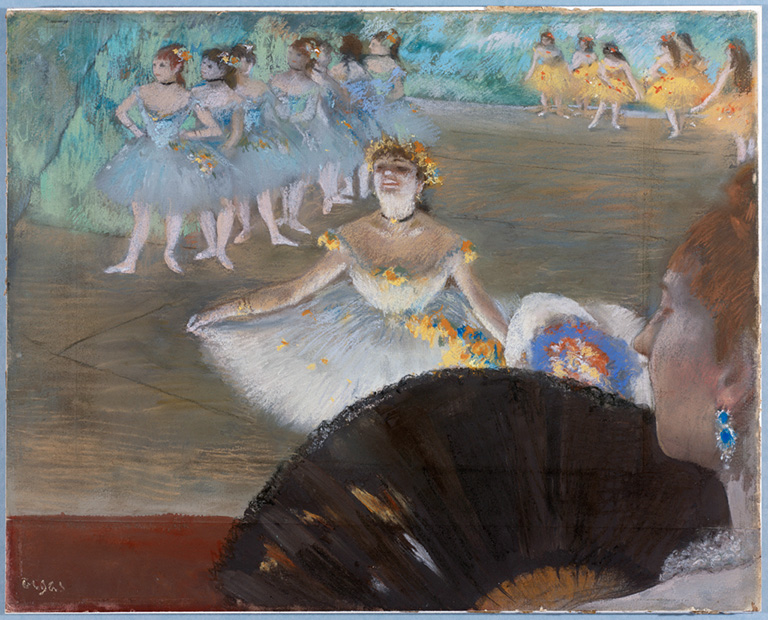
Edgar Degas began to exhibit Impressionist works in 1877, although, the public did not understand or accept his paintings caused by his use of Impressionism. He exhibited his work in the Impressionist Exhibitions, organized by his friends Monet, Renoir, and Pissarro.
His paintings were highly innovative. His use of different textures and unfinished surfaces was unique. He also had a passion for horse racing as a subject in his paintings.
In 1879, Degas Began Sculpting
He became a master of the medium and was famous for his bronze sculptures, influenced by Michelangelo’s classical style and subject matter from the Baroque period.
Some other famous works of art by Edgar Degas include:
“Nude Woman Standing, Drying Herself” (c. 1891–92) Present Location at The Metropolitan Museum of Art, NY.
“The Little Fourteen-Year-Old Dancer” 1922 (cast) 2018 (tutu) Present Location at The Metropolitan Museum of Art, NY.
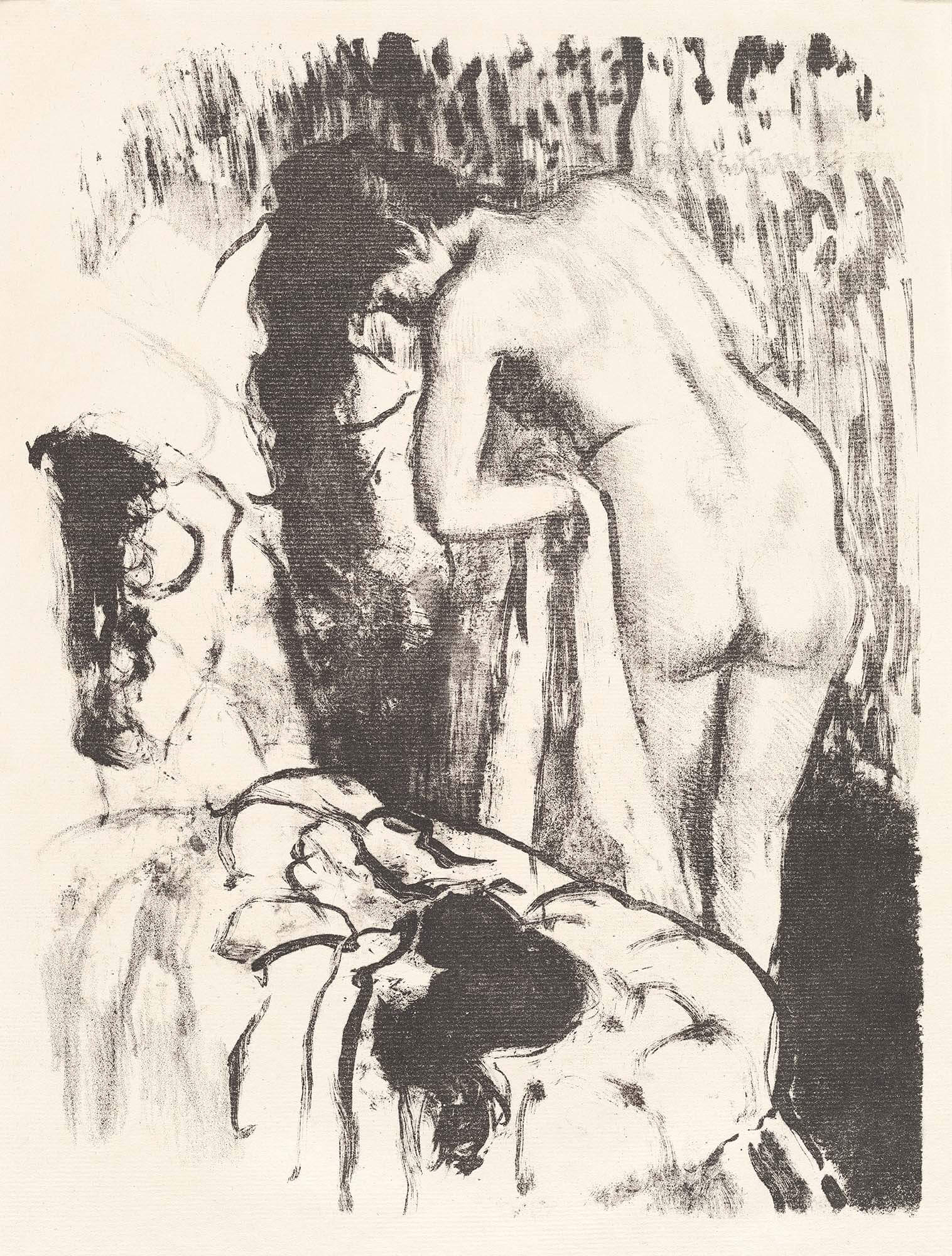

The Death of Edgar Degas
In his elder years, Degas became more reclusive, moody, and prone to bouts of depression. Arguably as a consequence of his increasing blindness.
He died in Paris on 27 September 1917 at the age of 83. His body was interred in The Cimetière de Montmartre.
During his lifetime Edgar Degas produced more than 1,500 paintings, sculptures, and prints.

